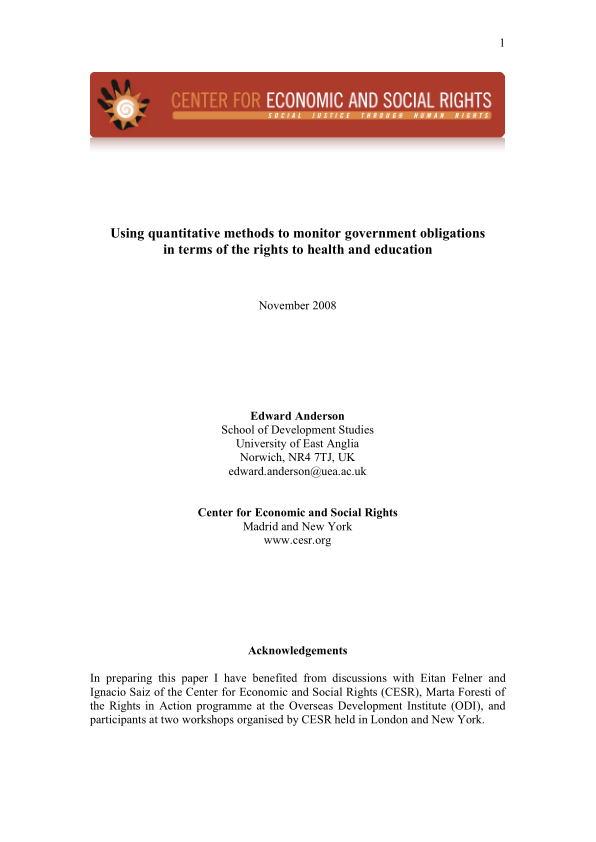This discussion paper has been prepared for CESR by Edward Anderson, lecturer in development economics at the University of East Anglia, and former research fellow of the Overseas Development Institute in London.
The discussion paper proposes a set of quantitative methods for assessing whether governments are complying with their economic and social rights obligations, with particular focus on the rights to health and education. The methods help to assess whether a government has made sufficient effort to fulfil the rights to health and education, taking into account resource and other constraints. The methods are designed to complement and build on existing methods used for this purpose by human rights groups and advocacy organisations.
Firstly, the paper outlines methods for analysing the determinants of relevant health and education indicators in any given country. The aim is to identify the factors which affect people's access to the goods and services which have an important effect on key health and education outcomes. Using multiple regression analysis, data from household surveys are used to shed light on the minimum essential levels of the rights to health and education, and on levels of disadvantage among different groups in society.
Secondly, the paper explores methods for identifying and costing an action that the government could take to raise people's access to these goods and services. The third stage establishes whether there are likely to be any adverse effects of raising the revenue required to cover these costs, and if so whether these offset the positive effects. A range of methods, including econometric analysis, are combined to assess whether an identified government action being considered would, over a specified period of time, raise levels of realisation of the right to health or education in line with a government's obligations. The paper discusses the different sorts of variables and indicators which can be used in implementing the methodology, as well as the main challenges, limitations and constraints likely to be faced when applying the proposed approach in any particular country context. A final section outlines some additional tools which can be used to identify countries in which to apply the proposed approach.
